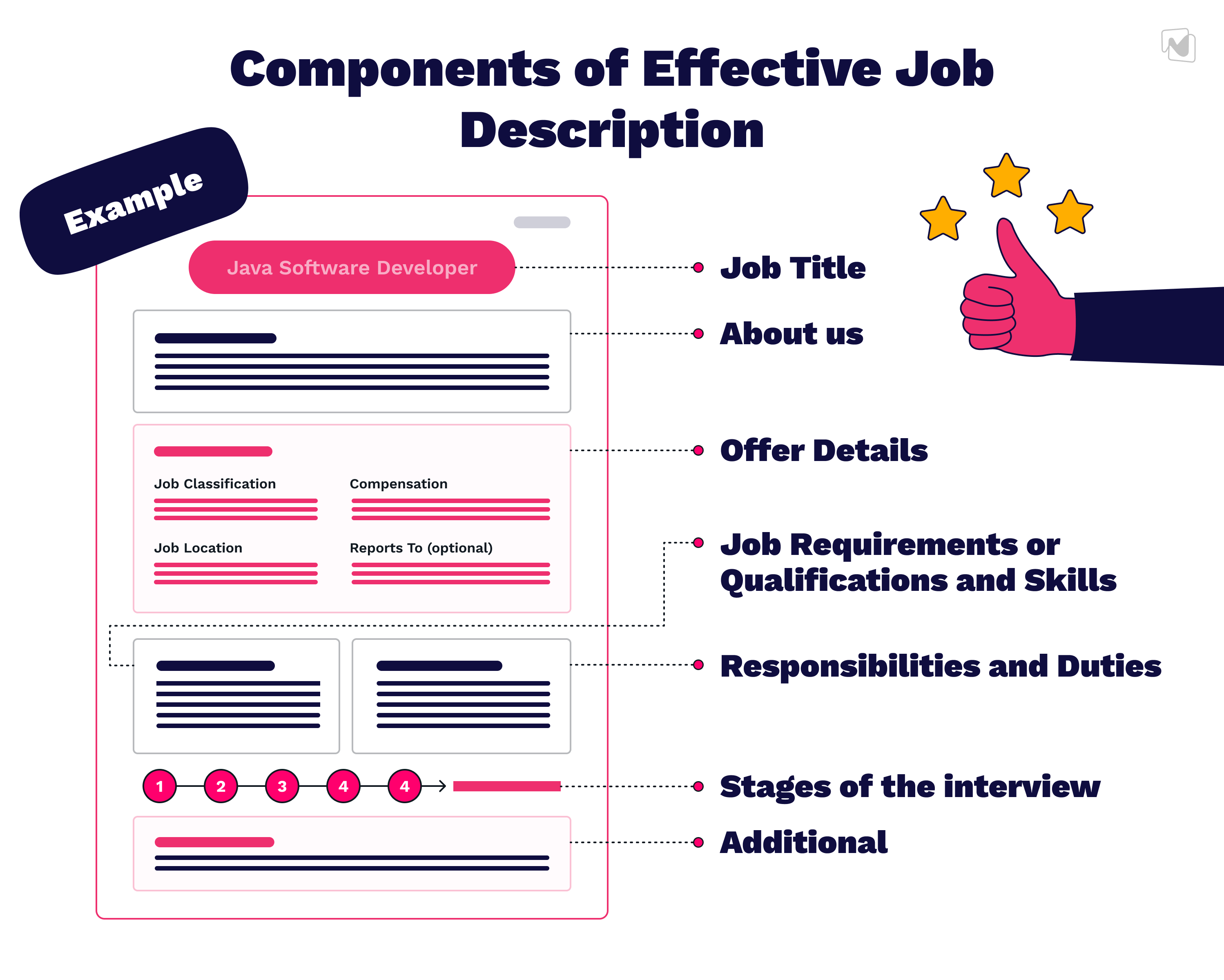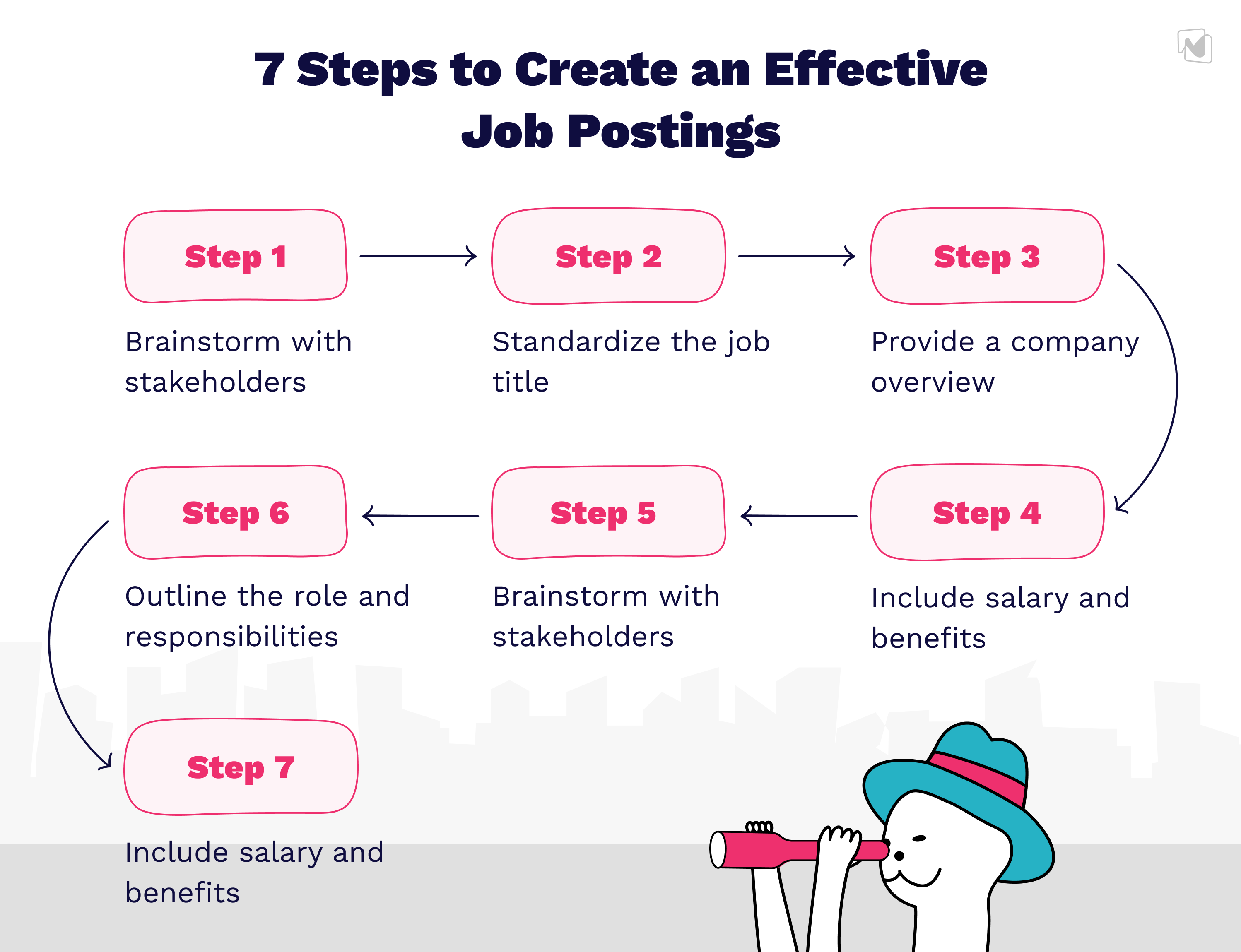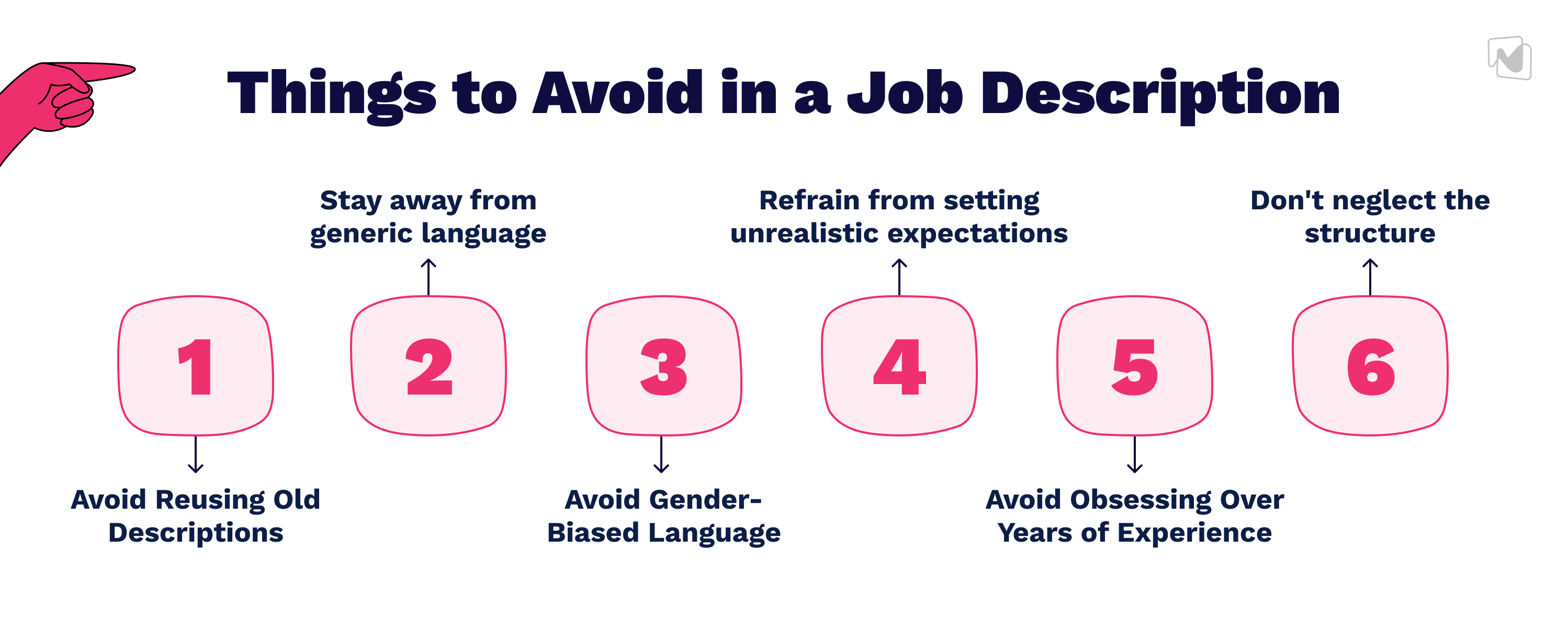The Role of Job Descriptions in Attracting IT Candidates
Clear and detailed IT job descriptions are crucial for attracting the right candidates with the necessary skills and qualifications. These documents serve as the first point of contact between the hiring company and potential candidates, providing valuable insights into the role, responsibilities, and expectations. Furthermore, such comprehensive job descriptions serve to highlight company culture, offer a competitive advantage, make a company stand out in a competitive job market, and attract top talent.
Obviously, it takes more work to create such a universal and multitasking tool.
So, let's delve into the challenges encountered by Hiring Managers when composing IT job descriptions.
- Lack of understanding about the expert job market and the tendency to list all realistic or unrealistic qualifications in the job description. This results in forming an ideal candidate profile, known as a unicorn.
- Specificity of Skills: IT roles often require specific technical skills, and it can be challenging to accurately convey these requirements without being too vague or too specific. Balancing the need for precision with the understanding that candidates may possess related skills is a delicate task.
- Avoiding Bias: Often, when someone leaves the company, the hiring manager comes with a request to hire someone similar— 'John №2' or 'Another Katty.' It is crucial to focus clearly on the actual job needs, not on personality.
The Importance of Writing an IT Job Description That Stands Out
Despite the ongoing global recession and widespread layoffs of IT specialists by many companies, the competition for top talent remains fierce. In this challenging environment, job descriptions are pivotal in helping a company stand out from its competitors. They are crucial for clearly communicating unique opportunities and the company's value proposition to potential candidates.
Moreover, it's worth noting that job descriptions offer valuable insights for both prospective applicants and employers. A well-defined job description contributes to the success of everyone involved by providing clarity for prospects.
Not only does it attract highly qualified applicants, but it also effectively filters out under-qualified applicants. This, in turn, saves valuable time by streamlining the application review and communication process.
Components of Effective Job Description
Unlocking the essence of a compelling job description lies in its well-crafted components. Explore the indispensable parts below to enhance the effectiveness of your job descriptions.

Job Title
Ensure consistency in your job title, the initial and (in some sense) most vital aspect of your job description. Keep it straightforward and recognizable as the attention-grabbing headline, playing a significant role in attracting potential applicants. Avoid using creative titles in public job descriptions to prevent missing out on qualified applicants. To capture the attention of IT pros who are quickly scanning through hundreds of job postings, make sure the job title is as specific as possible and reflects what they would be actually doing. For instance, instead of Software Developer, consider more particular titles like .NET Software Developer or Java Software Developer.
And, of course, don't use "ninja," "rock star," "Copy Cruncher," etc.
About us
In a nutshell, keep this section brief. Although applicants are keen on understanding the company they're applying for, their main focus lies in the nature of the work they will do. Hence, provide your company's website link so they can learn more about your business and delve into the About Us and Culture&Values sections.
Conversely, if your company has unique accomplishments that completely differentiate you from others, it's beneficial to summarise these in a concise 2-3 sentence description.
Offer Details
A more precise job posting attracts more relevant candidates. Consider incorporating the following details:
Job Classification: Clearly state whether the position is full-time or part-time.
Job Location: Specify whether the job is on-site, remote, or hybrid.
Compensation: Job postings with a salary or salary range generally attract more attention. If uncomfortable providing an exact salary, consider offering a reasonable range, e.g., $80,000 to $100,000, with a 25%–30% difference.
Reports To (optional): Include the direct manager's job title and/or name, including a link to their LinkedIn profile. This can be a valuable selling point if the supervisor is well-known or highly experienced."
We suggest you put these sections at the beginning. In case there is a mismatch between candidates’ expectations and these moments, they save a lot of time for reading.
Job Requirements or Qualifications and Skills
Qualifications and skills in a job description hold immense importance. They set clear expectations of what's needed from a candidate, covering facets like education, training, experience, and soft skills. These elements are the benchmarks that help sift through candidates and identify potential fits.
However, it's also important to be realistic about requirements. Aim for a balance between job needs and attracting a wide talent pool. Overdoing qualifications may risk deterring excellent candidates who may lack one or two specifics but could be a great fit with a bit of training or mentorship.
Responsibilities and Duties
Hiring managers often make the mistake of not including enough information about the daily tasks of a job in the position requirements. This makes it harder to find the right person for the role and reduces the chances of attracting candidates with the right skills.
Giving clear details about what the potential hire will be doing is crucial. The more information you provide, the easier it will be for job applicants to decide if they have the right skills for the job.
One of the best examples of job descriptions that I have seen throughout my career is the detailed portrayal of what a standard workweek will look like. It specifies every day, 8 hours, from morning till evening! (the document was attached to a shorter version of the vacancy description).
This certainly leaves no doubt in a candidate's mind that the company really cares about their newcomer. This level of detail almost allows a candidate to time-travel into the future, placing them right in the throes of your company's daily operations.
It is also a good practice to outline goals for the first 30-90-180 days. This enables candidates to understand better whether the company's objectives align with their own goals.
How many stages of the interview, and with whom?
Job applicants love this part. Every company's hiring steps are different in number and length. Tell candidates what they can expect during the hiring process so they can plan their time better.
Additional
If you're hiring developers, it's a smart idea to include these details in the job post:
- Type of project (domain, product/service, market)
- Current project development phase
- Project's technical details (tech stack)
- The team size and their seniority levels
7 Steps to Create an Effective Job Postings

Here are seven practical steps to write effective job descriptions:
1. Brainstorm with stakeholders. Begin by discussing the role with the team members who will work closely with the new hire. This helps you understand the specific needs and expectations for the new position.
2. Standardize the job title. Aim for simple, explicit titles that reflect the actual work. For example, instead of vaguely using 'Software Developer', consider titles like '.NET Software Developer' or 'Java Software Developer'.
3. Provide a company overview: This is where your company's 'elevator pitch' fits in. Include only catchy facts here and add a link for details.
4. Include salary and benefits: Be upfront about the salary range, work arrangements, and benefits. This expresses transparency and helps candidates gauge before applying whether the role matches their expectations or not.
5. Be clear and specific with requirements and duties. Don't try to find a unicorn or a combination of 5 people in one person.
6. Outline the role and responsibilities: Detail the duties and responsibilities associated with the role. Always highlight how these responsibilities contribute to the overall goals.
7. Ask your colleagues for feedback about the vacancy description and an honest answer about whether they would apply for it. Two heads are better than one.
Things to Avoid in a Job Description

When creating a job description, it's crucial to avoid common pitfalls that can hinder your hiring process. Here are key points to keep in mind:
Avoid Reusing Old Descriptions: It is a common mistake to reuse a previous job description when hiring someone to replace a long-term employee. Over time, an employee's responsibilities may change significantly from their initial role. Reusing an old job posting can result in unmet expectations if the new hire's tasks differ from those of their predecessor. Instead, pay attention to the actual daily responsibilities of the previous employee.
Stay away from generic language: Opt for precise and explicit wording, avoiding jargon, clichés, or vague terms. This ensures that the description is easily comprehensible, more attractive, and accessible to a wider pool of candidates.
Avoid Gender-Biased Language: Ensure your language is inclusive and doesn't favor one gender over another.
Refrain from setting unrealistic expectations: Listing too many requirements that very few or no candidates can meet will discourage potential applicants and make the recruitment process longer.
Don't neglect the structure: Use clear headings, bullet points, and concise paragraphs in the osition requirements to make it easy for candidates to read and understand the important points.
Avoid Obsessing Over Years of Experience: The duration of a candidate's tenure in the IT field may not necessarily indicate their true abilities or talent. For example, an individual with four years of experience who has been promoted twice might possess more practical expertise than someone with ten years who has worked on one project in the same domain. Instead of emphasizing the number of years, utilizing terms like "mid-level" or "senior-level" can more accurately convey the level of seniority required for the position.
Conclusion

In summary, effective job posting are pivotal in IT recruitment, setting the stage for successful hires. MagicHire specializes in crafting exceptional job descriptions tailored to the intricacies of the IT job market. Founders are encouraged to partner with MagicHire for expert recruitment services that stand out in the competitive landscape.
With a focus on clarity and precision, MagicHire ensures that great job posting attract top-tier IT professionals, addressing challenges such as skill specificity and bias avoidance. By choosing MagicHire, founders can elevate their recruitment strategy, tapping into a pool of qualified candidates tailored to their scale-up needs.
In the dynamic IT talent market, let MagicHire be your guide to great job posting that not only meet expectations but exceed them. Transform your recruitment process with MagicHire's expertise, and witness the impact on the caliber of candidates drawn to your organization.
FAQ
How do you write a catchy job posting?
To craft a compelling job posting, start by utilizing attention-grabbing job titles that accurately reflect the position. Clearly outline the job openings, emphasizing key responsibilities and qualifications. Incorporate engaging language, highlighting the company culture and perks. Utilize action verbs to describe tasks and showcase the impact the role has on the organization. Keep the posting concise, yet informative, and conclude with a call to action, prompting qualified candidates to apply promptly.
How should job seekers announce a job posting?
Job seekers can announce a job opening by strategically crafting a compelling job ad. Start by clearly stating the position and its requirements, utilizing relevant keywords to attract the right candidates. Share the job ad on various platforms, including industry-specific job boards and social media. Encourage networking by asking current employees for referrals and engage with professional networks. Additionally, optimize the job posting for search engines to enhance its visibility. This multifaceted approach increases the chances of reaching a diverse pool of qualified candidates.
How to write a job description that attracts the right candidate?
To get more people interested in a job, create an appealing job post. Use an interesting job title, talk about the company and the role, and include words that job seekers might search for. Keep it short and clear. Describe the job and its benefits. Make it easy to apply. Highlight positive aspects of the company. This will attract candidates to apply for the job.
Why are job postings essential in the job search process?
Job postings are vital for job searches as they provide crucial details about job positions, making it easier for job seekers to identify suitable opportunities matching their skills and career goals. These postings streamline the application process, acting as a key resource for individuals seeking specific job position.






